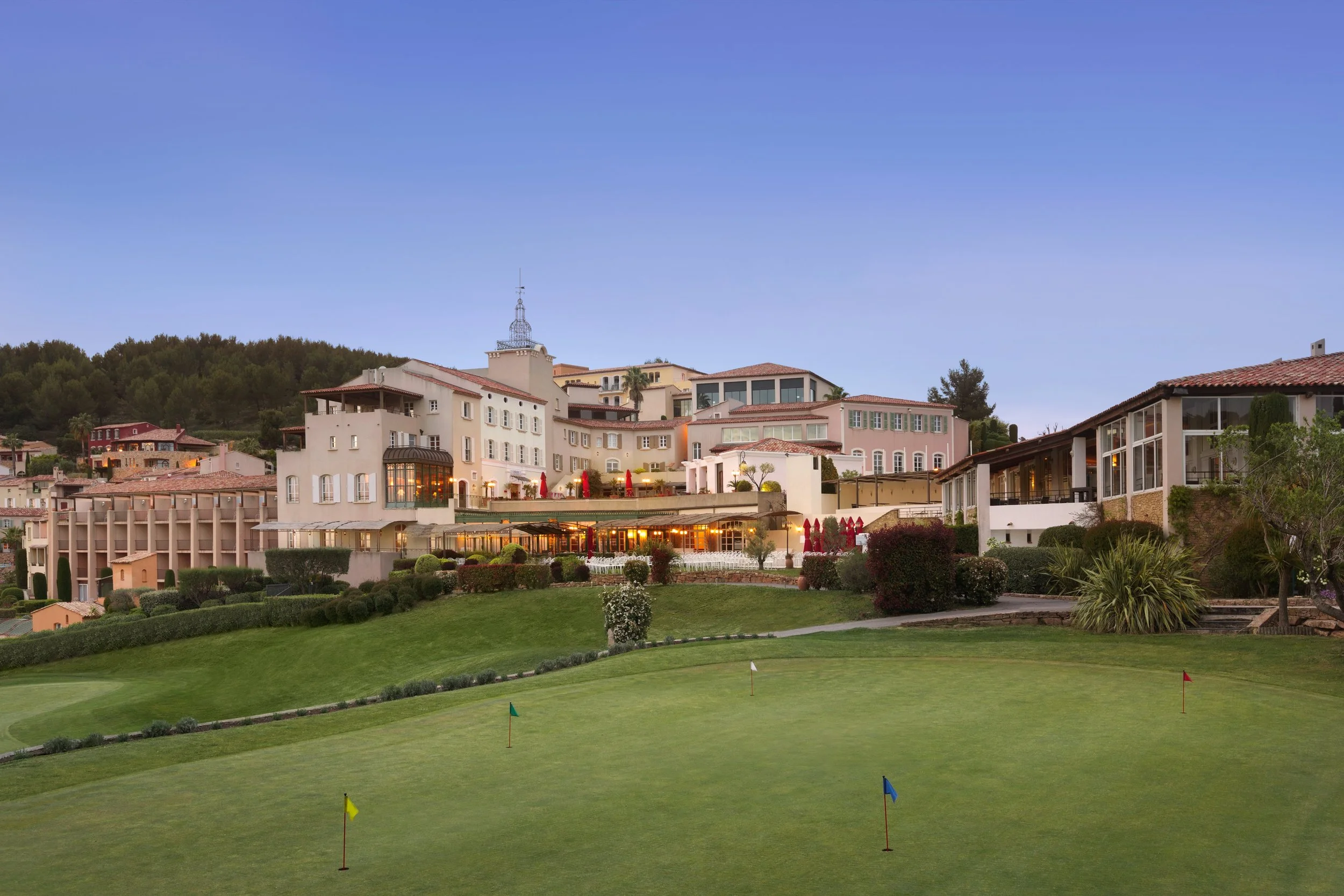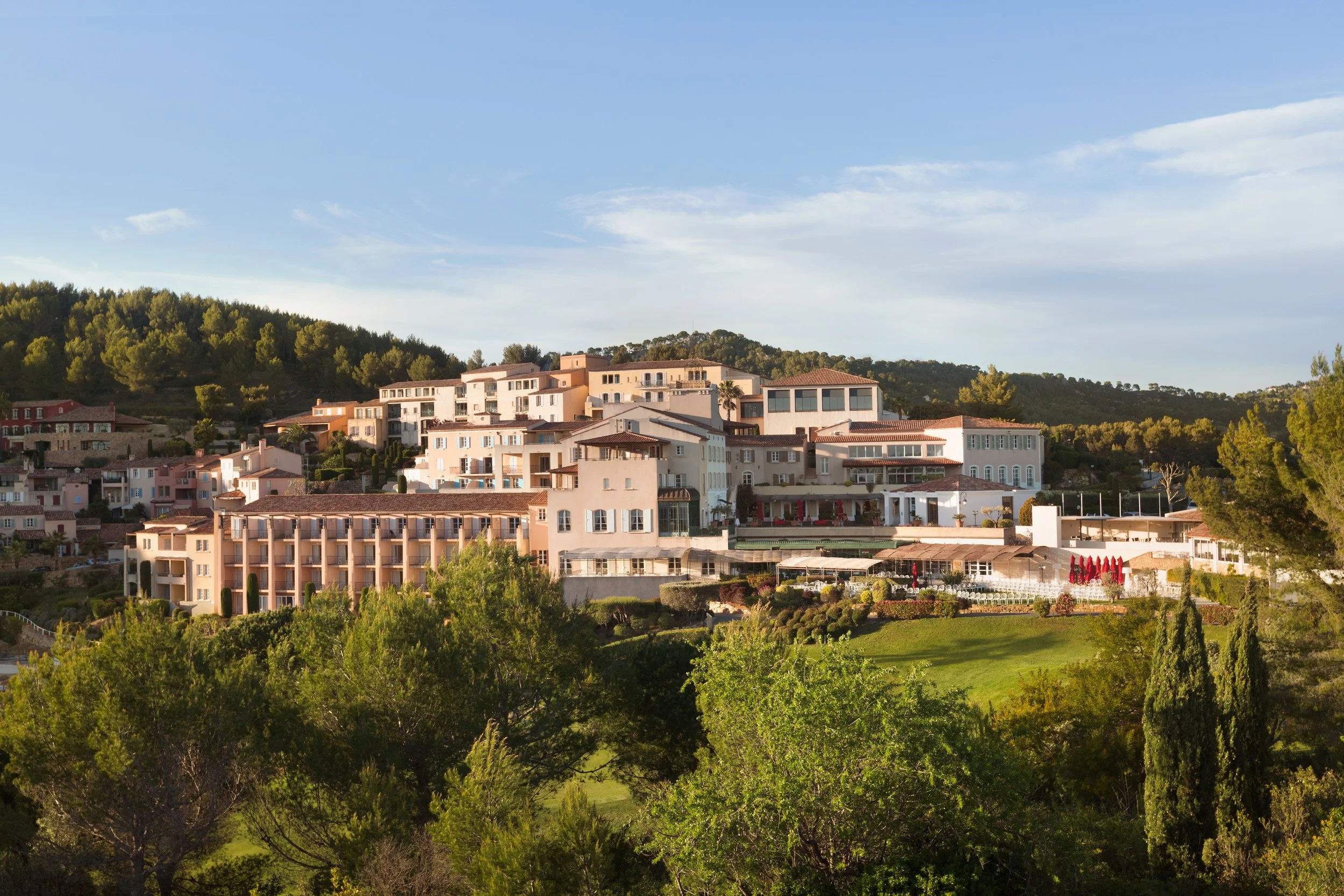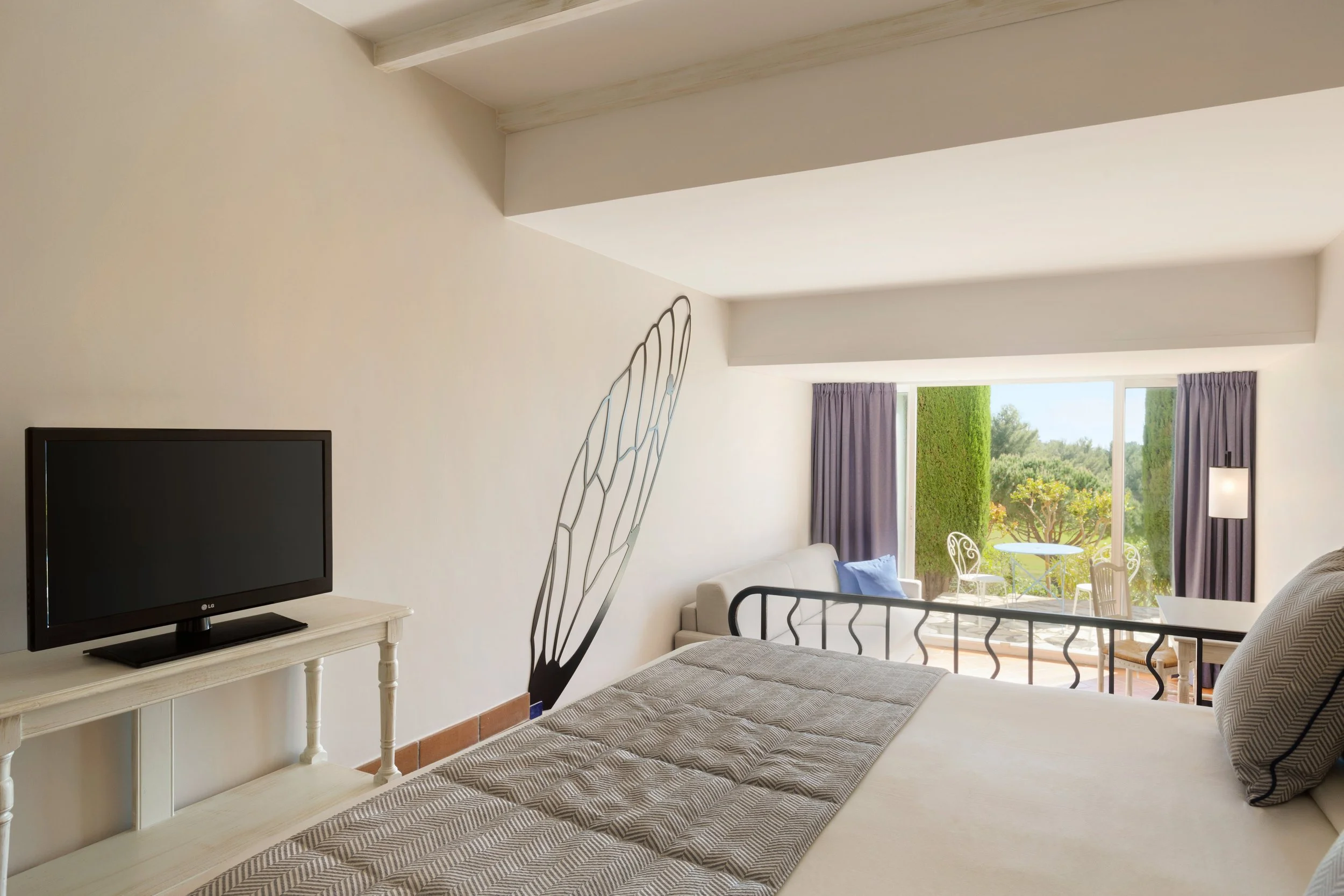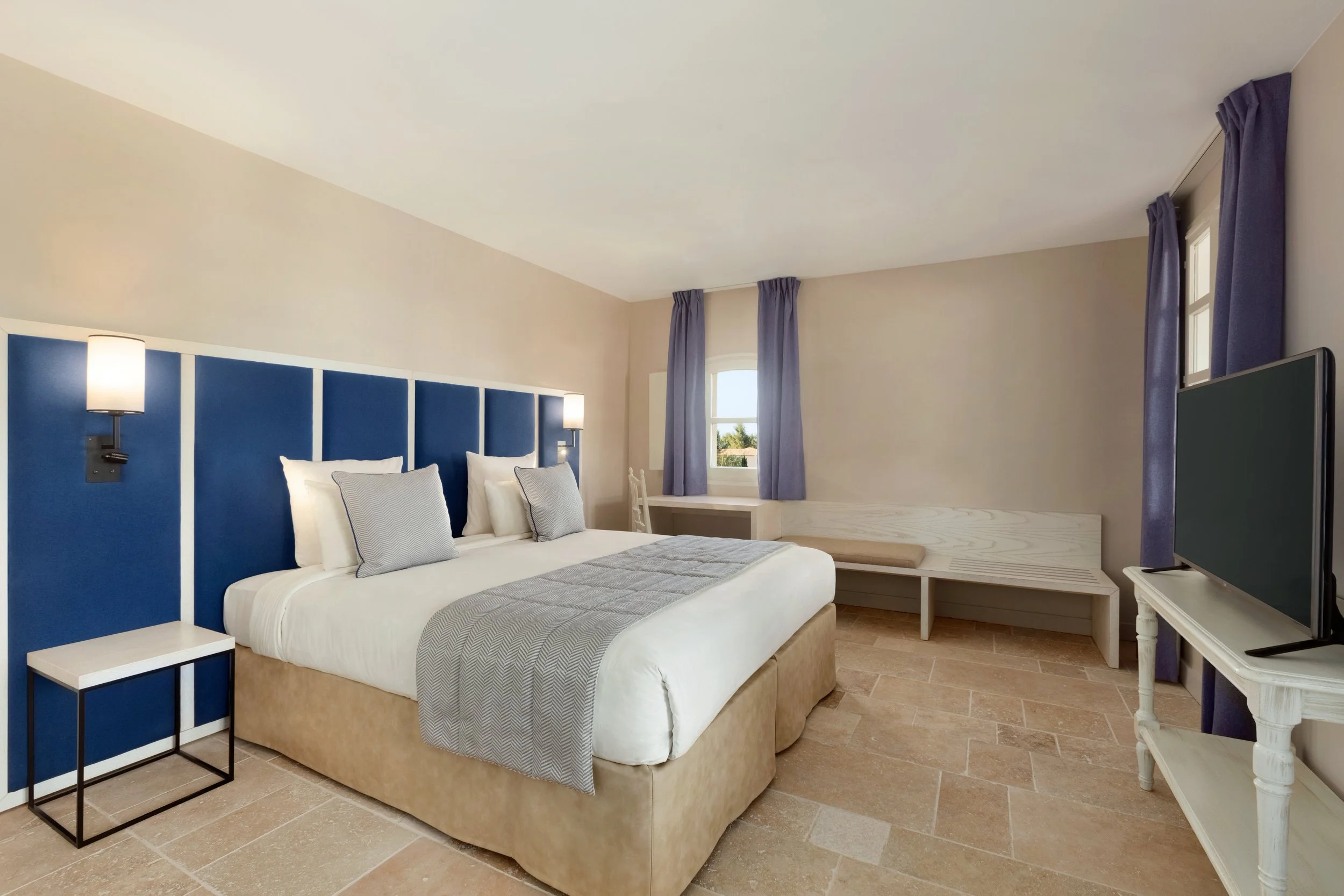
Exclusive Golf Retreat at Le Fregate Provence Resort
Perched between the azure expanse of the Mediterranean and the rolling, vine-clad hills of the Bandol appellation, Le Fregate Provence presents itself not merely as a destination, but as an immersive Provençal ideal. It is a resort conceived as a "cornucopia of authentic, natural experiences," a place where the terrestrial allure of one of France's most prestigious wine regions meets the timeless splendor of its southern coast. The property overlooks the bay of Saint-Cyr-sur-Mer, a landscape so singularly enchanting that it moved the 19th-century poet Alphonse de Lamartine to describe it as "the Bay of Naples in miniature," a testament to its profound natural beauty. This privileged setting is the foundational element of the resort's identity and the core of its appeal to a global clientele.
The resort's stated philosophy is an "invitation to let go," a call to embrace a lifestyle defined by "relaxation, inspiration and passion". This ethos frames a stay at Le Frégate Provence as more than a simple holiday; it is positioned as an opportunity to connect with a "source of natural wealth" that nourishes the mind, body, and spirit. The marketing narrative consistently emphasizes abstract, aspirational concepts over concrete amenities, selling the promise of an authentic Provençal lifestyle. This deliberate strategy aims to transform the physical property into a conduit for an emotion, a vessel for a feeling of serene, sun-drenched escape. This approach, however, establishes an exceptionally high standard for execution. When a brand promises an intangible ideal, the tangible reality of the guest experience must be flawless to sustain the illusion.
Le Fregate Provence is therefore a resort of compelling contrasts, a place where a world-class natural setting and an ambitious array of amenities contend with the tangible challenges of maintaining consistent excellence. The undeniable power of its location, the quality of its golf courses, and the charm of its Provençal concept are frequently lauded. Yet, this aspirational promise often clashes with the physical reality reported by guests, particularly concerning the condition of the accommodations. This report will explore this central dichotomy in exhaustive detail, analyzing every facet of the resort to provide a nuanced and comprehensive assessment of its standing as a premier European destination. It is an examination of a property at a critical juncture, where the magnificence of its natural "software" is pitted against the pressing need for investment in its physical "hardware."
The "Frégate" 18-Hole Championship Course
The golf offering at Le Frégate Provence is the cornerstone of its identity as a premier sporting resort. The 27 holes were designed in 1992 by the prolific American architect Ronald Fream and his firm, Golfplan, and are widely considered to be among the most beautiful in Europe.
Understanding the courses at Le Frégate requires an appreciation of their creator. Ronald Fream is a globally recognized architect whose career was shaped by his early work with Robert Trent Jones and a deep background in horticulture. His firm, Golfplan, has designed over 200 courses in more than 85 countries, often in emerging tourism markets where the goal is to create visually stunning and dramatic resort-style golf. Fream's philosophy emphasizes working in harmony with the natural landscape to create a memorable experience that is both strategically challenging for the skilled player and enjoyable for the average golfer. His work at Le Frégate is a quintessential example of this approach, leveraging a spectacular coastal site to produce a course where the scenery is as much a part of the experience as the game itself. This focus on the "modern resort market" is key to understanding why the course prioritizes breathtaking views and a technical layout perfectly suited to a destination that must appeal to a broad spectrum of traveling golfers.
The main course is a Par 71 layout that measures 6,084 meters (approximately 6,654 yards) from the back tees. Its defining characteristic, and the reason for its lofty reputation, is the integration of the Mediterranean seascape into the design. An extraordinary 15 of the 18 holes offer panoramic views of the water, creating a constant and dramatic backdrop for the round.
The course is renowned for its technical and hilly nature, a layout that rewards precision and strategic thinking over brute force. The fairways wind through the estate's natural landscape of Bandol vineyards, olive groves, and pine forests, with numerous elevated tees that amplify the visual drama and challenge the player's depth perception. The design incorporates unique historical and geological features of the land, including remnants of old stone walls built by convicts from Toulon, a former hunter's lookout, and elevated areas formed from an ancient quarry.
The signature hole is unequivocally the 10th. It is a moment of pure architectural theatre, where the player tees off from a high point on the property, playing down towards a green that appears to hang suspended above the sea. The view encompasses the Calanque de Port d'Alon and the Port de la Madrague, creating one of the most memorable tee shots in European golf and perfectly realizing Fream's philosophy of maximizing the natural drama of a site
The resort offers a total of 161 classified rooms and suites, housed within the main hotel building and a separate, distinct residential complex known as "Les Bastides". This dual offering provides a breadth of choice designed to accommodate a range of travelers, from couples on a short getaway to large families seeking an extended holiday.
The main hotel building, constructed in 1993 and last renovated in 2021, houses the majority of the accommodations. All rooms are soundproofed and feature air conditioning, premium bedding, and private balconies or terraces, with most offering views of the golf course or the sea.
Classic and Superior Rooms: These entry-level categories provide a comfortable base. The Superior Rooms measure 28 m² (301 sq ft) and are decorated in an authentic Provençal style, featuring a terrace with views of the sea or golf course.
Deluxe Rooms: These rooms offer a similar size but are distinguished by enhanced amenities, including deep-soaking bathtubs, which are a frequently mentioned feature in booking details.
Family Rooms: Catering to families of four, these rooms offer flexible bedding arrangements, such as a queen bed with a sofa bed or two twin beds.
Suites: For a more spacious and luxurious experience, the resort offers several tiers of suites. Junior Suites provide 40 m² of space. The top-of-the-range
Frégate Suites are the most opulent, spanning 60 m² and featuring "palatial materials," a king bed, separate lounge and dining areas, and a large outdoor terrace with panoramic views, representing the pinnacle of the resort's offerings












